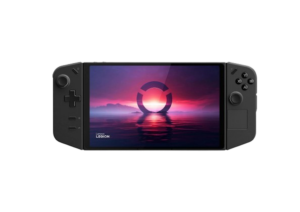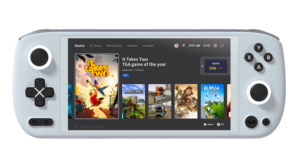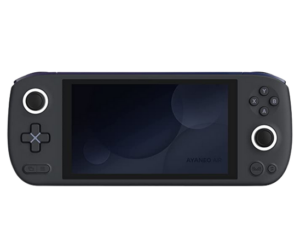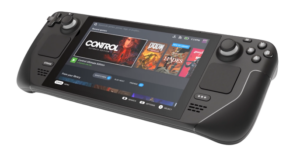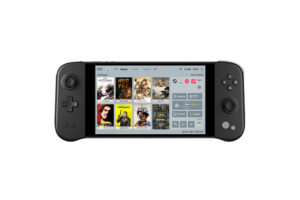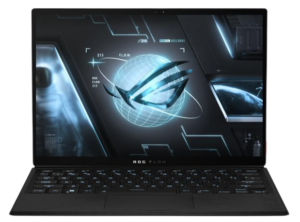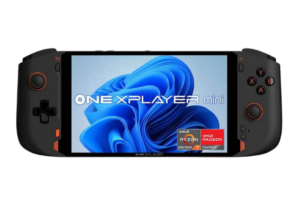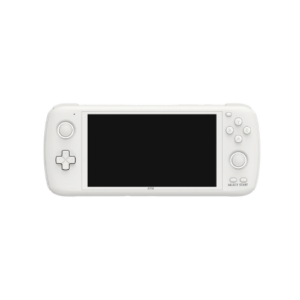Lenovo's Legion Go handheld is a little less Steam Deck and a little more Switch.
Lenovo Legion Go review: A handful of a handheld
Plenty of Aussies are still holding out for the Steam Deck to get a local launch, but there's no shortage of alternatives to Valve's portable PC if you get tired of waiting.
The Lenovo Legion Go is the latest to enter the arena. Where the ROG Ally hews towards handhelds like Nintendo's Switch Lite, this device builds on the blueprint of its predecessor. Rather than look to up the ante on performance, Lenovo's lean handheld PC is looking to distinguish itself on the extra flexibility offered by a larger screen and detachable controllers.
While not all of its design choices pan out as you'd hope, there is still plenty to like here regardless. The Lenovo Legion Go doesn't quite achieve its ambitious convergence of portable and PC gaming, but it gets pretty close for the price.
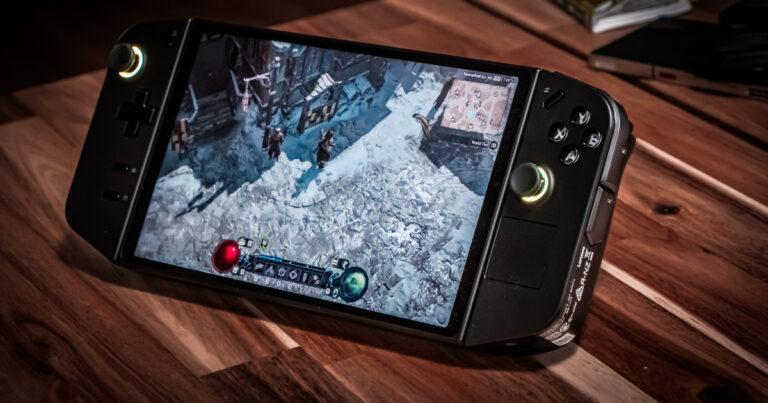
How much does Lenovo Legion Go cost in Australia?
If you're looking to pick up the Lenovo Legion Go, you're looking at spending at least $1299. That's a fair bit more than you're looking at for the likes of an Ayaneo or Steam Deck, but it's more or less in line with the ASUS ROG Ally.
Of course, what the Lenovo Legion Go might lack in thriftiness it'll more than make up for in availability. A sharp to contrast to the Steam Deck, it should be pretty easy to find via all the usual retailers. Check out the table below for a snapshot of local pricing for the handheld gaming PC.
Lenovo Legion Go design and features
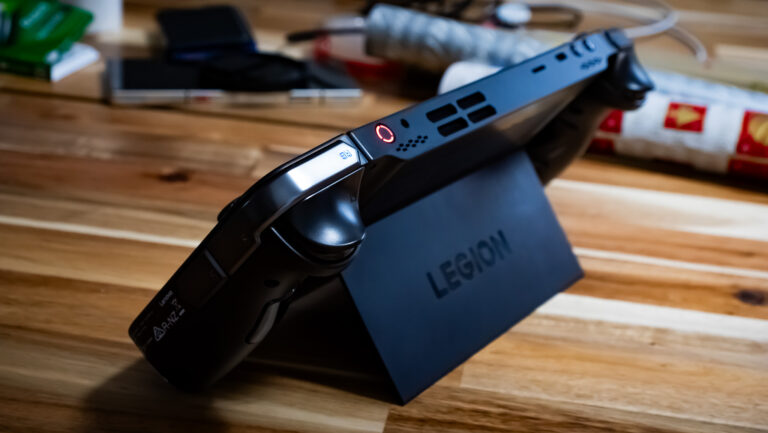
At a glance, the Lenovo Legion Go looks like a hybrid of the Steam Deck and the original Nintendo Switch. It's got a chunky 8.8-inch QHD IPS screen clocked at 144Hz on the front, a kickstand on the back and a pair of detachable Joy Con-ish controllers hanging off the side.
The button layout here is comprehensive, but a little busy. In addition to all the usual gamepad inputs, you've got a square-shaped trackpad on the right plus a set of dedicated Legion Space shortcuts. There's also a handful of more function-focused keys perched on the top-most edge, including the volume keys, a microSD slot, power button and a headphone jack.
To Lenovo's credit, there are two USB Type-C ports that can be used for charging to be found on the Legion Go. One is on the top of the unit while the other is on the bottom. Although it might seem small, this choice provides welcome flexibility whenever you're looking to use the Legion Go while attached to a power source.
As mentioned earlier, the button-boasting sides of the Legion Go can be detached and used wirelessly. This is neat notion, but a little finicky in reality.Having the option to set up the Legion Go as a standalone thing and use the controllers remotely is a novel idea, but it isn't really what you'd hope it would be in practice.
The process of detaching the Joy-Con-like controllers here is impressively unintuitive. There's a genuine knack to pushing the controller in the right way to unlock them from the chassis and I constantly found myself worried about damaging either element by accident.
Even when attached to the Legion Go, the ergonomics of these controllers leaves something to be desired. Where the Nintendo Switch Joy Cons can sometimes leave your hands feeling cramped, the pod-like appendages hanging off the Legion Go have the opposite problem. They're a bit of a handful and while the matte-black coloring and textured surface do make them feel a little less toy-like than their contemporaries, it wasn't long before my hands started to feel uncomfortable.
After a while, I started to suspect that the larger display found on the Legion Go probably wasn't helping things. At 8.8-inches, the screen here is significantly larger than the one you'll find on every other gaming handheld out there. It's basically a small tablet. While having more pixels to play with yields dividends in some respect, it also adds to the inevitably sense of heft that the Lenovo Legion Go can never quite escape.
At 854g, it's not impossible to hold in your hands for a solid while but the Lenovo Legion Go quickly began to wear on my arms no matter what position I played in. If you're planning to make use of the considerable flexibility that the hardware here offers or only planning to play in short-burst, that might not be a dealbreaker.
However, if you're looking for areas and aspects of this device that Lenovo might address in a second-generation model then the weight feels like the obvious one.
Lenovo Legion Go performance and battery life
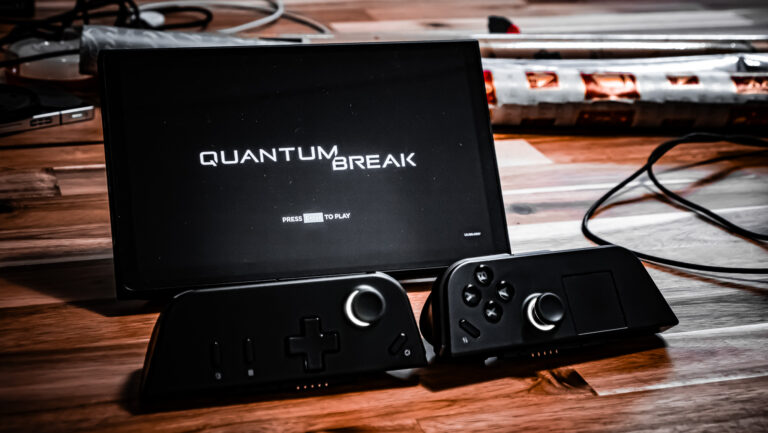
Rather than the many skews available to those who take advantage of Ayaneo's offering, the Lenovo Legion Go comes in just one single spec variant. This one-size-fits-all option is powered by a Ryzen Z1 Extreme processor, 16GB of DDR5 RAM and 512GB of SSD storage.
Without a Steam Deck on hand, it's difficult to say for certain how the Legion Go compares but the similarities here put it right alongside the ASUS ROG Ally when it comes to portable performance. Of course, one of the most significant differences between Valve's handheld and either of these devices is that fact that neither runs on Linux OS.
Instead, the Lenovo Legion Go runs on Windows 11 out of the box. Setting it up isn't all that different to the process you'll encounter with any modern gaming laptop -- minus a keyboard. As a result, you'll be relying on either the trackpad or the touch display on the Legion Go to navigate menus and the like. This is rarely glamorous, takes some getting used to but is usually tactile enough to get the job done.
Of course, those drawbacks do come with a few silver lining. As opposed to the Steam Deck, you can install anything that you want on the Lenovo Legion Go rather than be limited to stuff that runs on Steam or stuff that other people have built workarounds for. So long as it has decent controller support and falls within the graphical capabilities of the AMD silicon involved, it should run relatively well on the hardware here.
$1299 feels like a lot to spend on a handheld that runs indie games that the Switch can't handle on the go, but the Legion Go does a great job if that's what you want to use it for. Sometimes, I'd find myself toggling the settings or turning down the resolution to get a squeeze in a more frames. For more modest titles though, you'll probably be pretty satisfied with the 720p and 1080p results that the Lenovo Legion Go can deliver.
If anything, the relationship between price and performance here makes me suspect that the hardware here will probably be a hit among game developers looking to show off their projects at events like PAX Australia.
When it comes to more demanding games like Destiny 2 and Diablo 4, the difference between the gameplay and graphical experience offered by the Lenovo Legion Go was fairly significant. Although I could get both running at a fairly clean clip, those results did come with the caveat that I had to crank up the fan inside the Legion Go and crank down the in-game settings a fair bit.
It's a sad reality but if you're looking to play more impressive-looking titles on the Legion Go for all that long, you'll probably going to be tethered to a power point. The battery life here is as much of a pain-point as it is anywhere.
In practice, I'd end up seeing around two hours of usage off a single charge. That's not great, but it's not that short of where the original Nintendo Switch sat either. It didn't help that the Legion Go had a bad habit of waking itself up out of sleep mode from time to time, meaning that whenever I did loop back to playing with it I had to charge it back up again. All of this it to say that it can't hold a candle to the sleep mode on the Switch.
When it comes to this particular form-factor there is an inherent compromise that consumers are going to have to be willing to make when it comes to battery life. That said, what's here feels like it veers a little too far in that direction for comfort. When you're paying this much for the ability to play stuff you can't play on a Switch on the go, you'd hope to be able to play for about as long.
The last piece of the puzzle here is the Lenovo Legion Space software hub. This nexus echoes the look of Steam's Big Picture Mode and tries to offer a Switch-like UI that ties together all your various games. In practice, it feels a little overwhelming but it's certainly more polished, predictable and engaging to use than the software you'll find with any Ayaneo hardware.
I've said it before and I"ll say it again: If Microsoft ever gets around to shipping that new rumored handheld mode it'll be a game changer for devices like the Legion Go . Until that happens, the software experience is always going to be at a disadvantage to the end-t0-end seamless experiences offered by the Steam Deck and Steam Deck OLED. In the meantime, Legion Space is good enough to get the job done but rarely all that much to celebrate.
Lenovo Legion Go vs ASUS ROG Ally
While the Lenovo Legion Go is obviously gunning for the kind of popularity enjoyed by Valve's Steam Deck, the pricing and specs here make it a more apt rival for the ROG Ally. If you're tossing up between the two, the biggest thing to consider is whether you want a larger screen or the extra options that the former brings to the table.
On the other side of it, those seeking a handheld PC with that more traditional Switch Lite-like form-factor, the ROG Ally may be the better buy. It also might be a bit cheaper, since it's been on the market for a fair while now.
Is the Lenovo Legion Go worth buying?
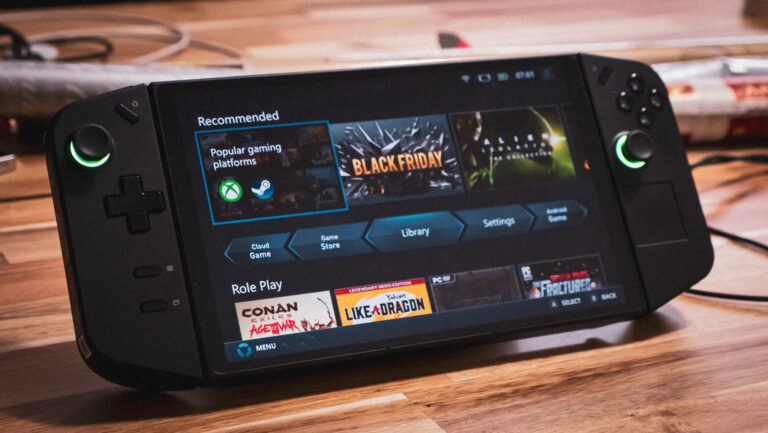
The Lenovo Legion Go is a device with ambitions that quickly overtake the hardware it has to work with. If you're in the market for a Steam Deck alternative, there's a lot to like about it. Nevertheless, the larger size bites into the appeal almost as often as it works to the benefit of it. While the performance here is solid, the overall experience rarely as effortless as you'd hope it would be.
There were moments where the Legion Go felt like it delivered on its potential as the handheld PC that could do it all, but plenty more where it felt like a first draft. The more time I spent with it, the more I found myself thinking about the tradeoffs that Lenovo has made with this device and how easily a second-generation model could do better by them.
There's enough going right here that it makes it easy to envision the world where the next version of Lenovo Legion Go carves out its own corner of the gaming handheld market, but not enough to convince me that this is the device that gets there.
Related Articles





